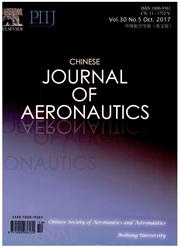

 中文摘要:
中文摘要:
在决定低地球轨道(狮子座) 的轨道用卫星转菠的 GPS 的卫星,接收装置天线阶段中心偏移量(PCO ) 引起的错误和阶段集中变化(PCV ) 逐渐地为继续的改进正在成为一个主要限制因素到精确性。Shiyan 3,为空间技术试验的一个小卫星使命和气候探索,被中国开发并且在 2008 年 11 月 5 日发射了。双频率的 GPS 接收装置收费载重交付 1 个 Hz 数据并且在一些厘米的范围以内为精确轨道决心提供基础。影响轨道决心的天线 PCO 和 PCV 错误特征和原则被分析。在不同方向的 PCO 和 PCV 评价和赔偿的可行性通过模拟和飞行中的测试被表明。为严肃恢复和气候实验和 Shiyan 3 卫星(优雅) 的接收装置天线 PCO 和 PCV 的价值从一月数据被估计。一个大、稳定的天线 PCO 错误,在 z 方向到达直到 10.34 厘米,与 Shiyan 3 卫星被发现。Shiyan 3 卫星上的 PCV 被估计并且到达多达 3.0 厘米,它比优雅卫星的稍微大。轨道确认清楚地改进了大小,独立 k 乐队(KBR )(SLR ) 并且卫星激光变化变化。为优雅卫星, KBR 剩余的平均的根平均数平方(RMS ) 从 1.01 厘米改善了到 0.88 厘米。为 Shiyan 3 卫星, SLR 剩余的平均 RMS 从 4.95 厘米改善了到 4.06 厘米。
 英文摘要:
英文摘要:
In determining the orbits of low Earth orbit (LEO) satellites using spaceborne GPS, the errors caused by receiver antenna phase center offset (PCO) and phase center variations (PCVs) are gradually becoming a major limiting factor for continued improvements to accuracy. Shiyan 3, a small satellite mission for space technology experimentation and climate exploration, was developed by China and launched on November 5, 2008. The dual-frequency GPS receiver payload delivers 1 Hz data and provides the basis for precise orbit determination within the range of a few centimeters. The antenna PCO and PCV error characteristics and the principles influencing orbit determination are analyzed. The feasibility of PCO and PCV estimation and compensation in different directions is demonstrated through simulation and in-flight tests. The values of receiver antenna PCO and PCVs for Gravity Recovery and Climate Experiment (GRACE) and Shiyan 3 satellites are estimated from one month of data. A large and stable antenna PCO error, reaching up to 10.34 cm in the z-direction, is found with the Shiyan 3 satellite. The PCVs on the Shiyan 3 satellite are estimated and reach up to 3.0 cm, which is slightly larger than that of GRACE satellites. Orbit validation clearly improved with independent k-band ranging (KBR) and satellite laser ranging (SLR) measurements. For GRACE satellites, the average root mean square (RMS) of KBR residuals improved from 1.01 cm to 0.88 cm. For the Shiyan 3 satellite, the average RMS of SLR residuals improved from 4.95 cm to 4.06 cm.
 同期刊论文项目
同期刊论文项目
 同项目期刊论文
同项目期刊论文
 期刊信息
期刊信息
